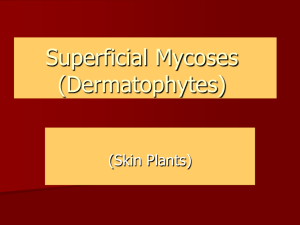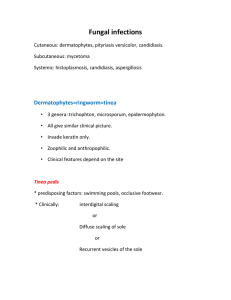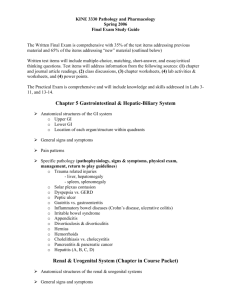Tinea Versicolor What Causes Tinea Versicolor?
advertisement
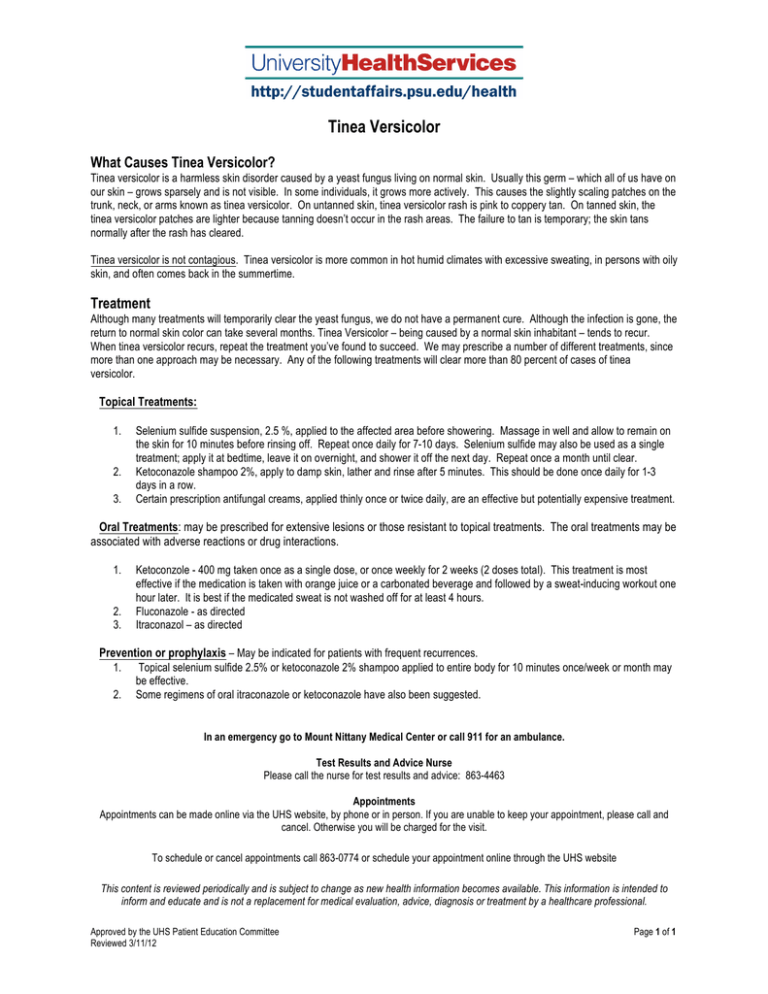
Tinea Versicolor What Causes Tinea Versicolor? Tinea versicolor is a harmless skin disorder caused by a yeast fungus living on normal skin. Usually this germ – which all of us have on our skin – grows sparsely and is not visible. In some individuals, it grows more actively. This causes the slightly scaling patches on the trunk, neck, or arms known as tinea versicolor. On untanned skin, tinea versicolor rash is pink to coppery tan. On tanned skin, the tinea versicolor patches are lighter because tanning doesn’t occur in the rash areas. The failure to tan is temporary; the skin tans normally after the rash has cleared. Tinea versicolor is not contagious. Tinea versicolor is more common in hot humid climates with excessive sweating, in persons with oily skin, and often comes back in the summertime. Treatment Although many treatments will temporarily clear the yeast fungus, we do not have a permanent cure. Although the infection is gone, the return to normal skin color can take several months. Tinea Versicolor – being caused by a normal skin inhabitant – tends to recur. When tinea versicolor recurs, repeat the treatment you’ve found to succeed. We may prescribe a number of different treatments, since more than one approach may be necessary. Any of the following treatments will clear more than 80 percent of cases of tinea versicolor. Topical Treatments: 1. 2. 3. Selenium sulfide suspension, 2.5 %, applied to the affected area before showering. Massage in well and allow to remain on the skin for 10 minutes before rinsing off. Repeat once daily for 7-10 days. Selenium sulfide may also be used as a single treatment; apply it at bedtime, leave it on overnight, and shower it off the next day. Repeat once a month until clear. Ketoconazole shampoo 2%, apply to damp skin, lather and rinse after 5 minutes. This should be done once daily for 1-3 days in a row. Certain prescription antifungal creams, applied thinly once or twice daily, are an effective but potentially expensive treatment. Oral Treatments: may be prescribed for extensive lesions or those resistant to topical treatments. The oral treatments may be associated with adverse reactions or drug interactions. 1. 2. 3. Ketoconzole - 400 mg taken once as a single dose, or once weekly for 2 weeks (2 doses total). This treatment is most effective if the medication is taken with orange juice or a carbonated beverage and followed by a sweat-inducing workout one hour later. It is best if the medicated sweat is not washed off for at least 4 hours. Fluconazole - as directed Itraconazol – as directed Prevention or prophylaxis – May be indicated for patients with frequent recurrences. 1. Topical selenium sulfide 2.5% or ketoconazole 2% shampoo applied to entire body for 10 minutes once/week or month may be effective. 2. Some regimens of oral itraconazole or ketoconazole have also been suggested. In an emergency go to Mount Nittany Medical Center or call 911 for an ambulance. Test Results and Advice Nurse Please call the nurse for test results and advice: 863-4463 Appointments Appointments can be made online via the UHS website, by phone or in person. If you are unable to keep your appointment, please call and cancel. Otherwise you will be charged for the visit. To schedule or cancel appointments call 863-0774 or schedule your appointment online through the UHS website This content is reviewed periodically and is subject to change as new health information becomes available. This information is intended to inform and educate and is not a replacement for medical evaluation, advice, diagnosis or treatment by a healthcare professional. Approved by the UHS Patient Education Committee Reviewed 3/11/12 Page 1 of 1
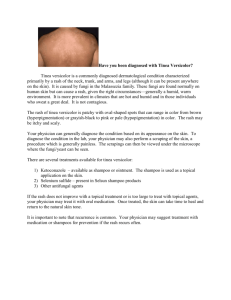
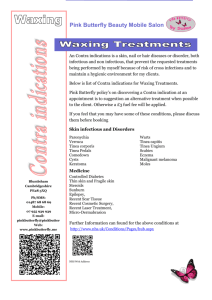
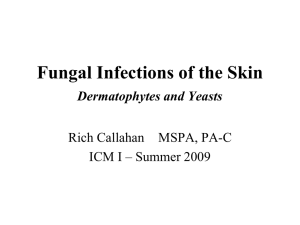
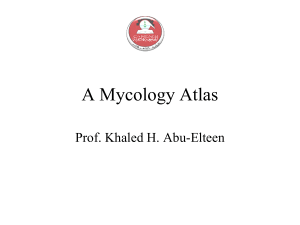
![Occupational Health - Zoonotic Disease Fact Sheets #15 DERMATOMYCOSES Foot)]](http://s2.studylib.net/store/data/013216770_1-db2cdf56a16f26d122fecafe6758caad-300x300.png)
